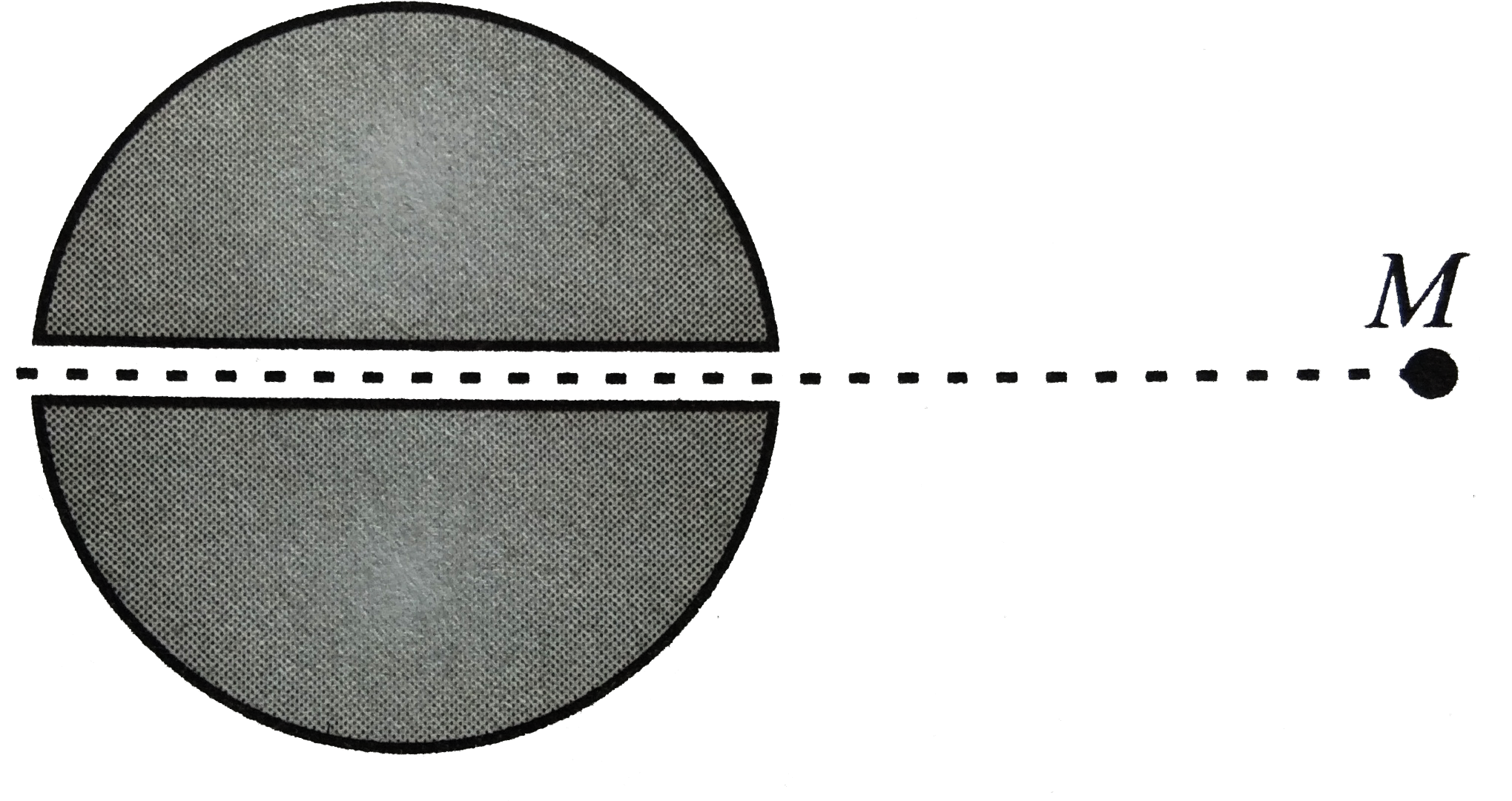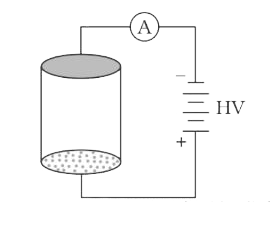Statement I: A needle placed carefully on the surface of water may float, whereas the ball of the same material will always sink.
Statement II: The buoyancy of an object depends both on the material and shape of the object.
If both assertion and reason are true and reason is the correct explanation of assertion.
If both assertion and reason are true but reason is not the correct explanation of assertion.
If assertion is true and reason is false.
If both assertion and reason are false.
The correct Answer is:C
To analyze the statements provided in the question, we will break down each statement and evaluate its validity step by step.
Step 1: Evaluate Statement I
Statement I: A needle placed carefully on the surface of water may float, whereas the ball of the same material will always sink.
- Analysis:
- A needle can float on the surface of water due to surface tension. The surface tension creates a force that can support the weight of the needle if it is placed gently on the water's surface.
- In contrast, a ball made of the same material, which has a larger volume and consequently a greater weight, will not float. The upward buoyant force acting on the ball (which is equal to the weight of the water displaced) is less than the weight of the ball itself, causing it to sink.
Conclusion for Statement I: True. The needle can float due to surface tension, while the ball sinks because its weight exceeds the buoyant force.
Step 2: Evaluate Statement II
Statement II: The buoyancy of an object depends both on the material and shape of the object.
- Analysis:
- Buoyancy is determined by the principle of Archimedes, which states that the buoyant force on an object is equal to the weight of the fluid displaced by the object.
- The buoyant force does not depend on the material of the object but rather on the volume of the object submerged in the fluid and the density of the fluid. The shape of the object can influence how much of it is submerged, but buoyancy itself is not directly dependent on the material.
Conclusion for Statement II: False. Buoyancy depends on the volume of fluid displaced and the density of the fluid, not directly on the material or shape of the object.
Final Conclusion
- Statement I: True
- Statement II: False
Statement I: A needle placed carefully on the surface of water may float, whereas the ball of the same material will always sink.
- A needle can float on the surface of water due to surface tension. The surface tension creates a force that can support the weight of the needle if it is placed gently on the water's surface.
- In contrast, a ball made of the same material, which has a larger volume and consequently a greater weight, will not float. The upward buoyant force acting on the ball (which is equal to the weight of the water displaced) is less than the weight of the ball itself, causing it to sink.
Statement II: The buoyancy of an object depends both on the material and shape of the object.
- Buoyancy is determined by the principle of Archimedes, which states that the buoyant force on an object is equal to the weight of the fluid displaced by the object.
- The buoyant force does not depend on the material of the object but rather on the volume of the object submerged in the fluid and the density of the fluid. The shape of the object can influence how much of it is submerged, but buoyancy itself is not directly dependent on the material.
- Statement I: True
- Statement II: False
Topper's Solved these Questions
- MECHANICAL PROPERTIES OF FLUIDSBOOK - NCERT FINGERTPS ENGLISHCHAPTER - MECHANICAL PROPERTIES OF FLUIDSEXERCISE - Pressure
28 Videos
- MECHANICAL PROPERTIES OF FLUIDSBOOK - NCERT FINGERTPS ENGLISHCHAPTER - MECHANICAL PROPERTIES OF FLUIDSEXERCISE - Streamline Flow
7 Videos
- MECHANICAL PROPERTIES OF FLUIDSBOOK - NCERT FINGERTPS ENGLISHCHAPTER - MECHANICAL PROPERTIES OF FLUIDSEXERCISE - Exemplar Problems
5 Videos
- LAWS OF MOTIONBOOK - NCERT FINGERTPS ENGLISHCHAPTER - LAWS OF MOTIONEXERCISE - Assertion And Reason
15 Videos
- MECHANICAL PROPERTIES OF SOLIDSBOOK - NCERT FINGERTPS ENGLISHCHAPTER - MECHANICAL PROPERTIES OF SOLIDSEXERCISE - Assertion And Reason
15 Videos
Similar Questions
Why does an object float or sink when placed on the surface of water?
View SolutionStatement I: An object from a greater height reaches a steady terminal velocity.
Statement II: The viscous forces on a body depends upon its velocity. The greater the velocity the greater is the viscous force.
View SolutionStatement-1: Leaves and small insects float on the surface of water buoyed up by archimede's principle
Statement-2: They are not partially submerged. The object are kept afloat by surface tension.
View SolutionStatement I: Droplets of liquid are usually more spherical in shape than large drops of the same liquid.
Statement II: Force of surface tension predominates force of gravity in case of small drops.
View SolutionStatement I: If a ball projected up obliquely from the ground breaks up into several fragments in its path, the centre of the system of all fragments moves in the same parabolic path compared to initial one till all fragments are in air.
Statement II: In the situation of Statement 1, at the instant of breaking, the fragments may be thrown in different directions with different speeds.
View SolutionStatement-1: A thin stainless steel needle can lay floating on a still water surface.
Statement-2: Any object floats when the buoyancy force balances the weight of the object.
View SolutionStatement I: In free space a uniform spherical planet of mass M has a smooth narrow tunnel along its diameter. This planet and another superdense small particle of mass M start approaching towards each other from rest under action of their gravitational forces. When the particle passes through the centre of the planet, sum of kinetic energies of both the bodies is maximum.

Statement II: When the resultant of all forces acting on a particle or a particle like object (initially at rest) is constant in direction, the kinetic energy of the particle keeps on increasing.
View SolutionStatement I: Imagine holding two identical bricks under water. Brick A is completely submerged just below the surface of water, while brick B is at a greater depth. The magnitude of force exerted by the person (on the brick) to hold brick B in place is the same as magnitude of force. exerted by the person (on the brick) to hold brick A in place.
Statement II: The magnitude of buoyant force on a brick completely submerged in water is equal to the magnitude of weight of water it displaced and does not depend on the depth of the brick in water.
View SolutionState the following statements as TRUE or FALSE.
a. A convex mirror cannot from a real image for a real object.
b. The image formed by a convex mirror is always diminished and erect.
c. Virtual image formed by a concave mirror is always enlarged.
d. Only in the case of a concave mirror, it may happen that the object and its image move in same direction.
e. In the case of a concave mirror, the image always move faster than the object.
f. If an object is placed in front of a diverging mirror at a distance equal to its focal length, then the height of image formed is half of the height of object.
g. For two positions of an object , a concave mirror can form englarged image.
h. Concave mirror is used as a rear view mirror in motor vehicles.
i. If some portion of the mirror ois covered, then complete image will be formed but of reduced brightness.
j. A plane mirror always forms an erect iamge of same size as that of the object.
k. The image formed by a plane mirror has left-right reversal.
l. A virtual object means a converging beam.
View SolutionConsider an evacuated cylindrical chamber of height h having rigid conducting plates at the ends and an insulating curved surface as shown in the figure. A number of spherical balls made of a light weight and soft material and coated with a conducting material are placed on the bottom plate. The balls have a radius r<<h . Now, a high voltage source (HV) is connected across the conducting plates such that the bottom plate is at+V0 and the top plate at −V0 .

Due to their conducting surface, the balls will get charged, will become equipotential with the plate and are repelled by it. The balls will eventually collide with the top plate, where the coefficient of restitution can be taken to be zero due to be soft nature of the material of the balls. The electric field in the chamber can be considered to be that of a parallel plate capacitor. Assume that there are no collisions between the balls and the interaction between them is negligible. (Ignore gravity)
Which one of the following statements is correct ?
View Solution
